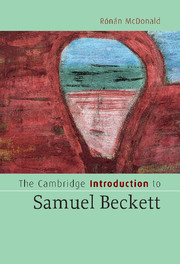Chapter 3 - Plays
Published online by Cambridge University Press: 05 June 2012
Summary
Waiting for Godot
The scene, and the action (or lack of it), are unmistakable: a bare country road with a mound and a tree, two elderly tramps wait for their appointment with a man called Godot, who never comes. This spare, nondescript setting for Beckett's first performed play has become one of the iconic images not just of modern drama but of the twentieth century itself. The meaning of the play is less certain. One of the first questions that spectators of the play often ask is who (or what) is Godot? Perhaps he represents ‘God’? The boy who appears at the end of each act claims that Godot has a long white beard, like some pictorial representations of God in the West (or like a child's image of God) and that he keeps sheep and goats. (According to the Gospel, God will separate the righteous from the damned by putting the ‘sheep’ on his right side, ‘goats’ on his left (Matthew 25: 32–3).) After all, Godot gives Estragon and Vladimir a sense of direction and purpose in their lives (however misplaced), in a manner analogous to religious belief. Could the play, then, be an allegory for a post-theistic existence? Written in the shadow of the Second World War, God/Godot seems to have deserted a world mutilated by barbarism, mass destruction and genocide. His absence has left a hole which unavailing desire and expectation vainly try to fill.
- Type
- Chapter
- Information
- The Cambridge Introduction to Samuel Beckett , pp. 29 - 70Publisher: Cambridge University PressPrint publication year: 2007



